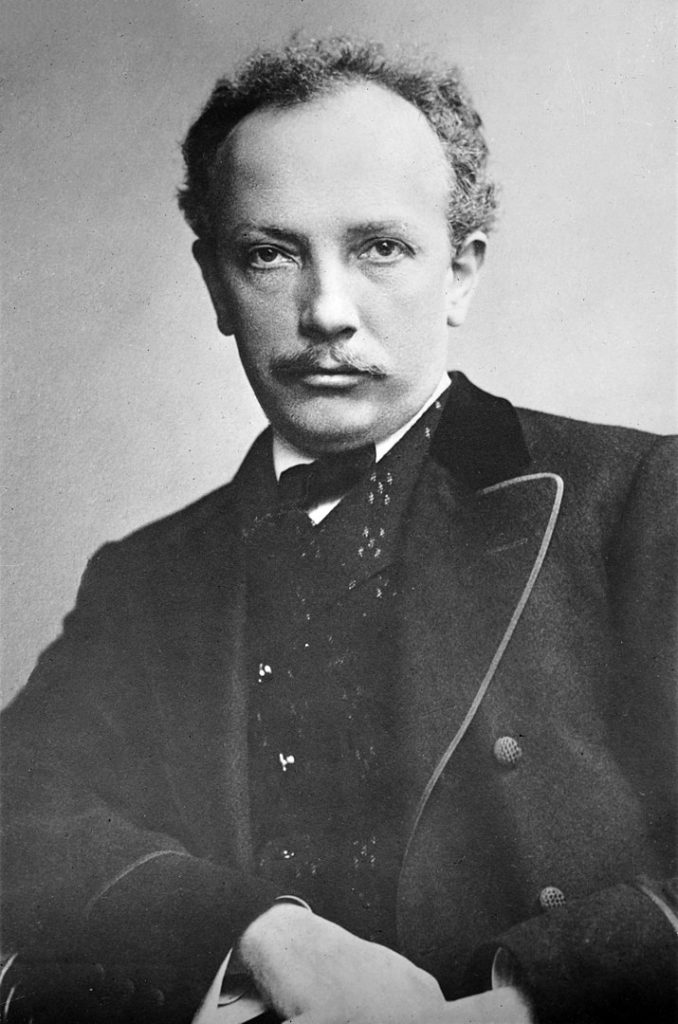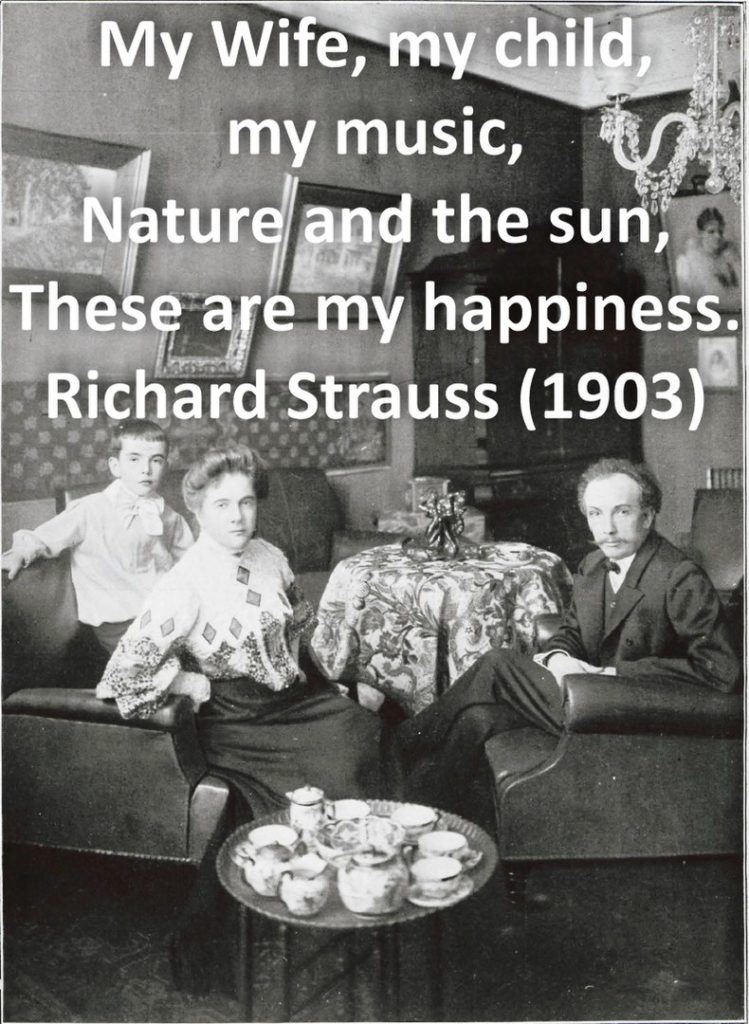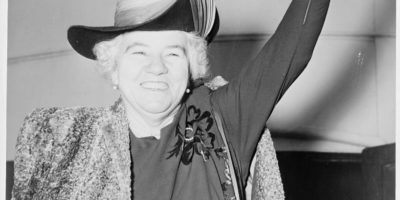
Richard Georg Strauss – ruwiki – Wikimedia Commons
Top 11 Remarkable Facts about Richard Georg Strauss
Richard Georg Strauss was a German violinist, pianist, conductor, and composer. He was born on June 11th, 1864 in Munich, Germany (then German Confederation). He died aged 85 on 8th September 1949 in Garmisch-Partenkirchen, West Germany.
Strauss is regarded and considered as one of the greatest if not the greatest composer of the early modern and late-Romantic eras. His works encompass almost every type of classical compositional form.
Both Straus and Gustav Mahler are the embodiment of the late flowering German Romanticism. This is where advanced harmonics were combined with pioneering subtleties of orchestration.
So prominent was Strauss that he was labeled the successor of Franz Liszt and Richard Wagner. The two were established and prominent professionals in the musical field speaking to how good a composer Strauss was.
The following is a list of remarkable facts about the life and career of Richard George Strauss.
1. He Was a Prodigy
Strauss is the son of Josephine and Franz Strauss. Franz was the principal horn player at the Court Opera in Munich and a professor at Königliche Musikschule. Consequently, Richard was raised in a musical home and got lessons early on from his father.
At the age of four, Strauss started taking piano lessons with the Munich Court Orchestra’s harpist, August Tombo. Soon after, he started going to the orchestra’s practices. He also took lessons from the assistant conductor of the group in music theory and orchestration.
At the age of six, he created his first composition. He continued to create music almost to the day of his passing. Benno Walter, the conductor of the Munich Court Orchestra, began teaching him the violin in 1872. When he was 11 years old, he started his five-year study of composition with Friedrich Wilhelm Meyer.
2. Dropped Out of University
In 1882, Strauss graduated from Ludwigsgymnasium. He went on a joined the University of Munich to study Philosophy, Art, and History.
However, after only a year, he dropped out and decided to pursue music. He was hired to work as Hans von Bulow’s assistant, where he picked up conducting skills.
After Bulow retired in 1885, he chose Strauss to take over as his successor. This was mainly because of his talent and mastery of wind instruments.
3. He Was Influenced by Richard Wagner and Alexander Ritter
It was well known that Richard Wagner’s music repulsed Strauss’s father. Therefore, he urged his son to listen and emulate composers like Mozart, Haydn, and Beethoven instead.
However, Strauss was permanently hooked after hearing Wagner’s challenging horn solos in his opera Tristan und Isolde. Wagner’s method impacted Strauss’ work throughout his professional career as a result of his obsession.
Early compositions by Strauss were written for chamber groups. However, this changed after meeting Alexander Ritter, who became his mentor and role model. Ritter encouraged Strauss to abandon his traditional compositional technique in favor of a new one. This encouraged him to produce more tone poems.
4. Married Soprano Pauline de Ahna

Strauss picture with family and quote relating to happiness – By Byronmercury – Wikimedia Commons
Pauline de Ahna, a soprano, and Strauss were wed on September 10th, 1894. It was a match made in heaven. That is because Pauline was the inspiration for some of the best characters he created.
Pauline was both Strauss’s longtime student and the eccentric lead of his first opera, Guntram. They stayed together and married till his death. Just eight months after her husband passed away, she passed away in 1950.
5. Strauss’ Opera, Salome, Caused Public Outrage and Scandal

Gertrude Hoffmann, scantily-dressed for the role in opera, “Salome” – By PPOC, Library of Congress – Wikimedia Commons
In 1905, Strauss produced Salome. Salome was a dissonant modernist opera based on an Oscar Wilde play. The opera produced a passionate and somewhat scandalous reaction from the public.
There were some crude elements in the production. Such as a Dionysian kiss of the detached head of John the Baptist and a striptease. Consequently, the play was banned in several theatres and cities.
However, this only made it popular and it became a must-see opera when performed. It also received great critical acclaim. Maurice Ravel said, “Salome was ‘stupendous.’” Gustav Mahler described it as “a live volcano, a subterranean fire.”
6. Richard Strauss Had a Great Collaboration with Hugo Von Hofmannsthal
After the success of Salome, Strauss collaborated on his next opera project with Hugo Von Hofmannsthal. The two collaborated on five more works over the following 20 years, all of which were enormous successes.
Strauss was able to push the limits of Romantic harmony because of the production of Elektra. He consequently included lots of dissonances and prolonged chords, which were all contemporary musical and thematic aspects.
One of their most celebrated joint works is Der Rosenkavalier. Sadly, Hofmannsthal passed away before their subsequent collaboration, Arabella, was finished.
7. Richard Strauss Blemished His Reputation with Ties to Nazi Germany

From the left: composer Richard Strauss (President of the Reichsmusikkammer, Department of Music in the propaganda Ministry), Heinz Drewes (Generalintendant and General music director of the Reichsmusickammer), and Joseph Goebbels (Nazi propaganda chief) – Unknown Author – Wikimedia Commons
In the early 1930s and late 1920s, the Nazi regime and influence grew considerably. Strauss did not join their party for convenience reasons for his career.
However, he did cooperate with the Nazi regime since he hoped they would promote German art culture. He did this also intending to protect his Jewish daughter-in-law and his grandchildren.
In 1933, Strauss decided to chair the Reich Music Chamber, which blemished his reputation significantly. The Rich Music Chamber was a cultural unit by the Nazi regime which promoted “good German music” and Nazi ideals.
8. He Was Apprehended by U.S. Troops After World War II
American soldiers detained Strauss at his Garmisch estate in April 1945. “I am Richard Strauss, the composer of Rosenkavalier and Salome,” he said as he approached Lieutenant Milton Weiss of the U.S. Army.
Lt. Weiss, a musician himself, nodded in agreement. The grass was thereafter marked “Off Limits” to safeguard Strauss.
9. He Left Behind a Formidable Musical Legacy

Stage design by Helmut Jürgens for “Arabella” by R. Strauss, performance Munich 1952 – By UweJuergens – Wikimedia Commons
Strauss’ musical composition was diverse encompassing all types of classical composition forms. However, he found greater success with operas and tone poems.
Don Juan was his first tone poem that achieved great public acclaim. He does, however, have some other lauded works such as An Alpine Symphony, Don Quixote, Ein Heldenleben, Symphonia Domestica, Till Eulenspiegel’s Merry Pranks, and Death and Transfiguration.
Salome was his first opera to receive international fame and acclaim. Other critically acclaimed operas include; Daphne, Die ägyptische Helena, Die Frau Ohne Schatten, Arabella, Danae, and Ariadne Auf Naxos.
10. He Wrote the Famous “Four Last Songs” Before His Death
When his son Franz visited him in Montreux in 1948, Strauss was once more inspired to write music. Franz told him “Papa, stop moping around and sending letters; it serves no purpose. Instead, create a few lovely songs.”
A few months later, when Alice, Franz’s wife, arrived for a visit, Strauss casually told her, “Here are the songs your husband ordered.” These songs have come to be known as The Four Last Songs.
11. Richard Strauss Died of Kidney Failure
Strauss was hospitalized in December 1948 for several weeks. This was after he underwent bladder surgery. His health continued to deteriorate from henceforth.
However, he managed to conduct a final performance on his 85th birthday at the Prinzregententheater in Munich. On 15th August 1949, he suffered a massive heart attack.
On 8th September 1949, Richard Strauss passed away in his sleep due to kidney failure.
Planning a trip to Paris ? Get ready !
These are Amazon’s best-selling travel products that you may need for coming to Paris.
Bookstore
- The best travel book : Rick Steves – Paris 2023 – Learn more here
- Fodor’s Paris 2024 – Learn more here
Travel Gear
- Venture Pal Lightweight Backpack – Learn more here
- Samsonite Winfield 2 28″ Luggage – Learn more here
- Swig Savvy’s Stainless Steel Insulated Water Bottle – Learn more here
Check Amazon’s best-seller list for the most popular travel accessories. We sometimes read this list just to find out what new travel products people are buying.









